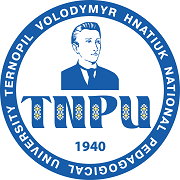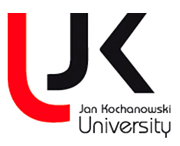EMOTIONAL VOCABULARY IN THE ART ALBUM-CATALOG “THE THEATER-MUSEUM OF DALÍ IN FIGUЕRES”
DOI:
https://doi.org/10.32782/2307-1222.2024-58-14Keywords:
emotion, emotional state, emotional vocabulary, guide, intensity of manifestation of emotional state, Salvador Dali, theater-museum.Abstract
The article reveals the meaning of the concepts of “Theater-Museum” and “Museumsführer”, briefly highlights the history and symbolism of the theater-museum of the surrealist artist – Dalí, located in the small Spanish town of Figuerеs. The motivational model of the theater-museum is three-component: creative activity, geography, localization, mediated by the emotional state of the founder. The symbolism is interpreted from the standpoint of archaic culture, modified nationally. Special attention is focused on the systematization and classification of emotional vocabulary. Emotional vocabulary is the result of translation activity, realizes, describes or characterizes certain realities, and also expresses the emotional attitude of the genius of Spanish and world art to the surrounding world and at the same time to the significant events of his own life, transformed by artistic consciousness. Represented by fully meaningful (verb, noun, adjective, adverb) and incomplete (emotional part) parts of speech, it functions in the empirical material independently and in combination with other words, forming free and stable word combinations, as well as sentences (elliptical, complex). On the other hand, the emotive vocabulary signals the combined emotional experience and palette of emotions of the compilers of the guidebook and visitors to the theater-museum of Dali. Collective and individual emotional evaluations of artistic subjects with the «positive – negative» line are distinguished. Emotions are positive: surprise, interest, joy, pride, love, negative – physical suffering. Fear and guilt are inseparable from it. The duality of the nature of emotions, focused on extra-linguistic factors, including socio-psychological and theological, has been established. Despite the different nature and modality of the analyzed emotions, their content remains homogeneous, has a positive meaning. Emotions of surprise, interest, and joy are characterized by the intensity of emotional experience. Gender bias towards female visitors of the theater-museum was also revealed.
References
Гамзюк М.В. Емотивний компонент значення у процесі створення фразеологічних одиниць: на матеріалі німецької мови. Київ : Видавничий центр КДЛУ, 2000. 256 с.
Гізер В.В. Лінгвокультурологічні моделі текстів краєзнавчого характеру: доперекладознавчий аналіз. Науковий вісник Херсонського державного університету. Серія «Германістика та міжкультурна комунікація». 2019. Вип. 1. С. 175–181.
Енциклопедичний словник символів культури України / за заг. ред. В.П. Коцура, О.І. Потапенка, В.В. Куйбіди. 5-е вид. Корсунь-Шевченківський : ФОП «Гавришенко В.М.», 2015. 912 с.
Орленко Н.А., Просвірніна С.С., Харуп О.С. Структура занять та організація проведення змагань з танцювальної аеробіки / укл. Л.О. Шип. Київ : Видавництво національного авіаційного університету «НАУ-друк», 2011. 40 с.
Прокопенко А.В. Історія перекладу та перекладацької думки: Англія, Німеччина, Америка, Україна. Суми : Сумський державний університет, 2018. 87 с.
Романова Н.В. Емотивна лексика релігійного дискурсу (на матеріалі Євангелія “Das Neue Testament”). Науковий вісник Херсонського державного університету. Серія: «Германістика та міжкультурна комунікація». 2019. Вип. 1. С. 326–334.
Götz D. (Hg.). Großwörterbuch Deutsch als Fremdsprache. Stuttgart : Langenscheidt, 2019. 1343 S.
Lakoff G., Johnson M. Metaphors we live by. Chicago : University of Chicago Press, 2003. 276 p.
Pitxot A., Aguer M., Puig J. Theater-Museum Dalí in Figueres. Triangle : Postals, 2005. 208 S.
PONS. Basiswörterbuch Deutsch als Fremdsprache. Київ : Методика, 2004. 490 с.
WAHRIG. Wörterbuch der deutschen Sprache. München : dtv, 2012. 1152 S.










